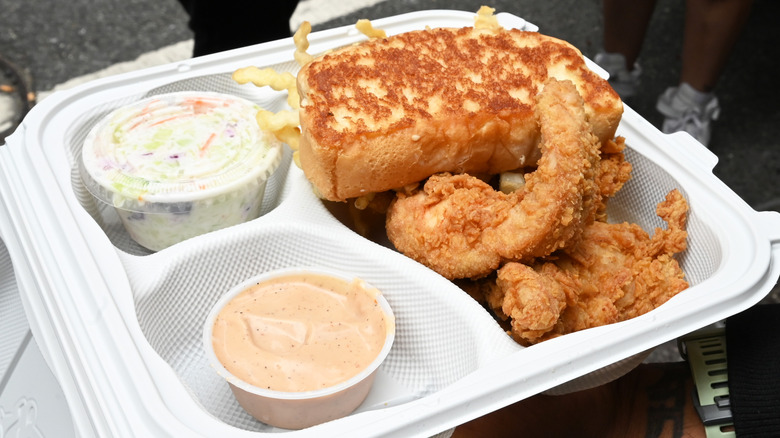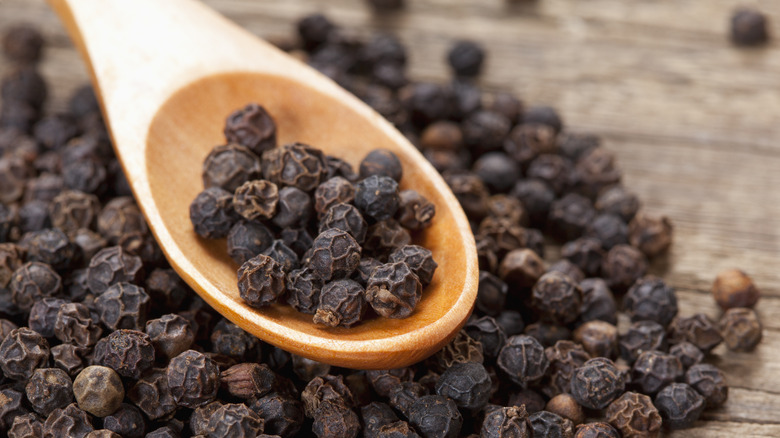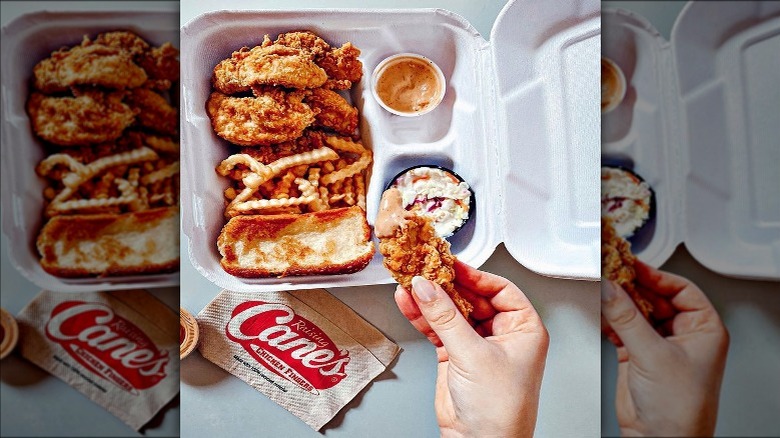The Most Crucial Steps When Making Copycat Raising Cane's Sauce
What kind of Raising Cane's person are you? What are you drawn to when you're looking at its menu? Are you strictly a chicken-tender person, sticking to the chain's flagship product? Do you lean more toward the sides, choosing from crinkle-cut fries, Texas toast, and coleslaw? Or perhaps you're a sauce person, someone who can't get enough of that tangy and savory condiment that comes with every basket of tenders?
Raising Cane's sauce, simply called Cane's sauce, is indeed a very popular item — so much so that it's actually possible to order a 32-ounce cup of the stuff alone. With such popularity, of course, there are bound to be many copycat recipes, each declaring to have achieved the same level of flavor and texture that you'd expect from the real deal. Although each recipe differs slightly in its own way, there are certain steps and ingredients that you must follow no matter what sort of copycat recipe you're following.
What you're going to need is a good amount of coarse black pepper and a working refrigerator. It may not sound like it, but just a simple addition of that seasoning and a stint in the fridge actually help give your homemade sauce that authentic taste and texture.
Why you should use coarse black pepper
If you've ever tasted Cane's sauce even just once, you'll be able to recall one very prominent flavor: pepper. It's enough to be noticeable but not overpowering. That's why, in any recipe you find for Raising Cane's sauce, you're going to need black pepper, specifically the coarse variety.
You have two options when it comes to this ingredient. The first is to get fresh black peppercorns and, if you don't already have one, a pepper mill. By grinding your own peppercorns, you'll get the freshest taste possible for your sauce. If obtaining fresh peppercorns isn't a viable option, then getting store-bought coarse black pepper that's already been pre-ground will work absolutely fine.
How much pepper you actually put in your sauce is up to you. If you like a condiment that's more peppery than most, add as much as you'd like. If you don't like a lot of it, add only as much as you're comfortable with. The beauty of Cane's sauce is that it's very forgiving and doesn't necessarily require exact measurements. So long as you're actually adding coarse black pepper to your sauce, you should have something that's very close to the stuff you'd normally get with your crinkle-cut fries and Texas toast.
Once you've added your preferred amount of pepper, it's time for the sauce to go into the fridge. If you were expecting this to be a quick refrigeration, however, you'd be sadly mistaken.
Let the sauce sit in the fridge overnight
You're probably pretty hungry for some Cane's sauce, considering we spent most of the article talking about it. So, now that you have your sauce, you'll want to dig in right away, correct? Unfortunately, you're going to have to give that sauce an overnight stay in your fridge before you use it at your next barbeque or dip your fries into it.
Although we say "overnight," you ideally want 24 hours in the fridge, at least. The reason for this long wait time is two-fold: It both allows the sauce to thicken up (rather than becoming a soupy, watery mess) and it allows the flavors to blend together more effectively. If you were to dip into it now, it would still be very good, but it wouldn't have the same taste you were expecting. While it may be tempting to serve it right then and there, putting the sauce in the fridge for a night (and, in a perfect world, the next day) will produce a much better end result. Patience is a virtue, after all.
Raising Cane's has never fully disclosed how it makes its sauce, with one Q&A YouTube video even stating that "somebody would have to kill you" if you were ever told the secrets of the recipe. Still, you can take some comfort in knowing you can make your own sauce at home. Now, if only you could get your hands on some coleslaw and Texas toast, too.


